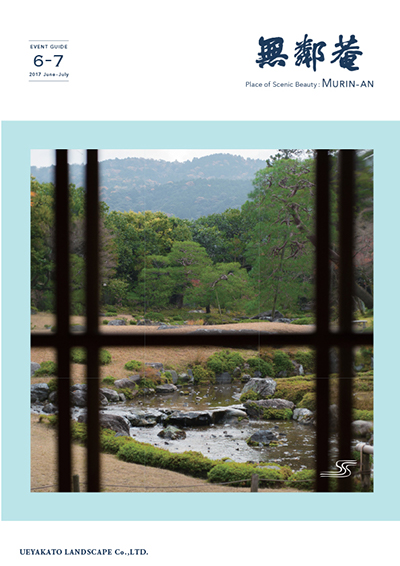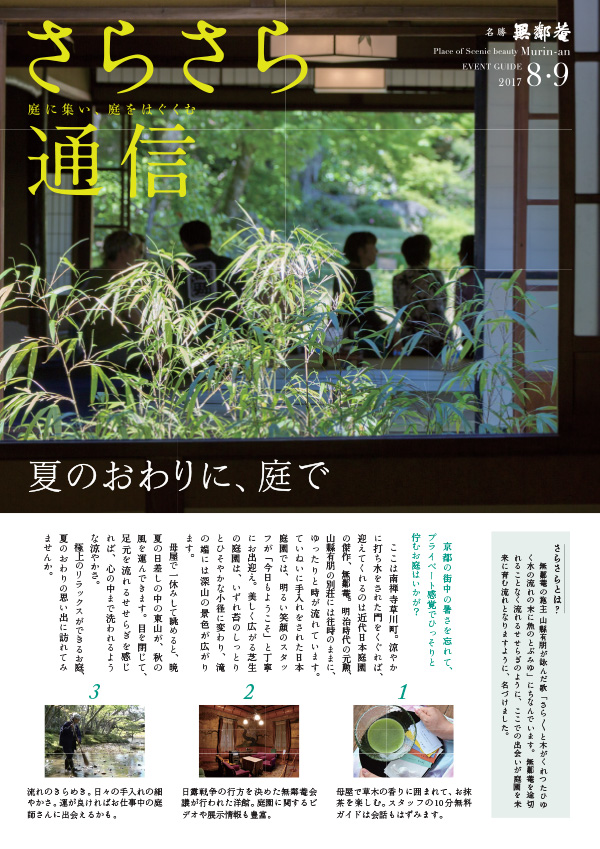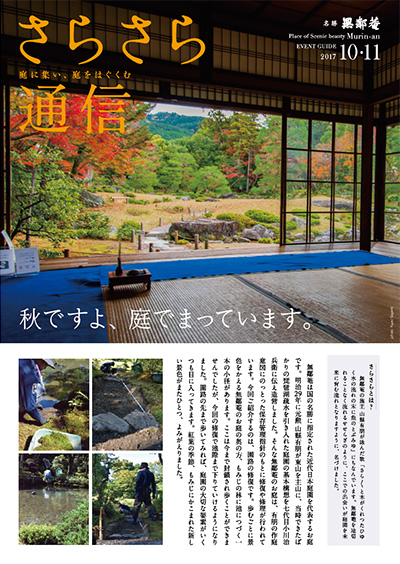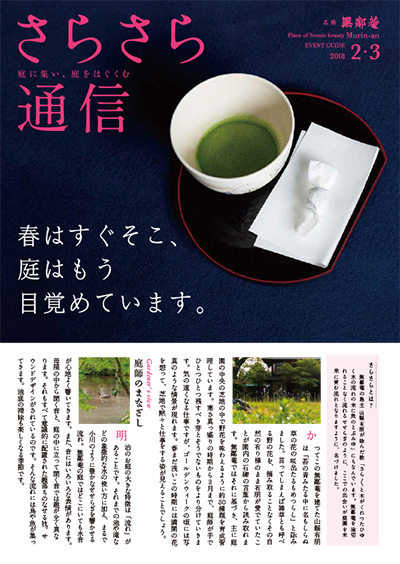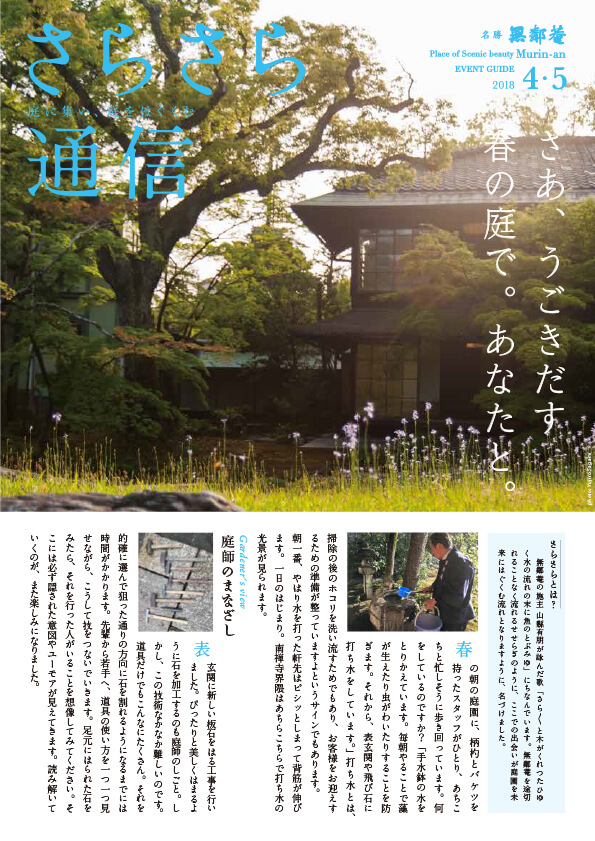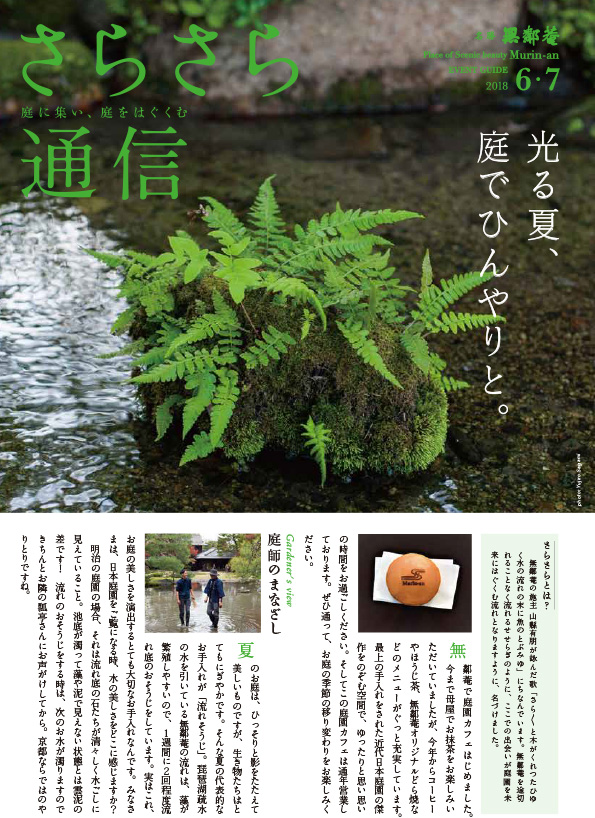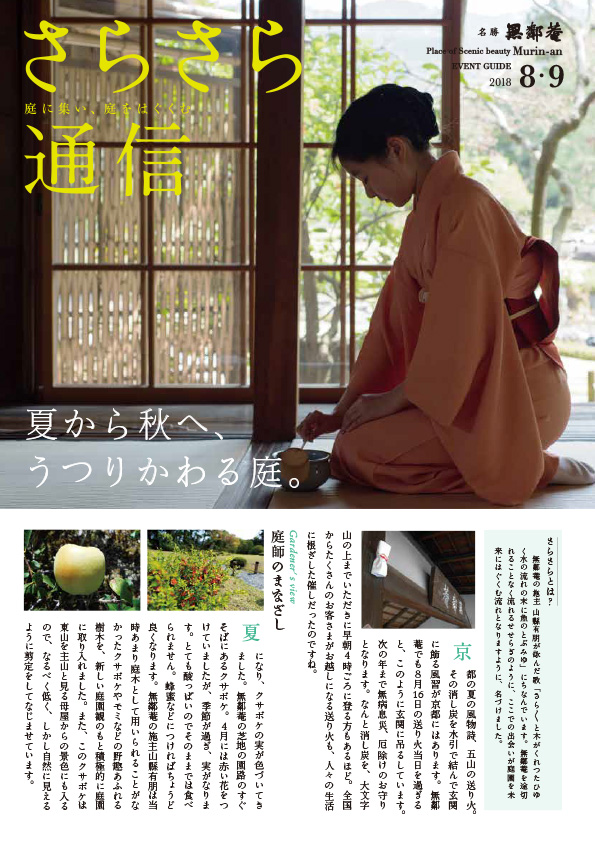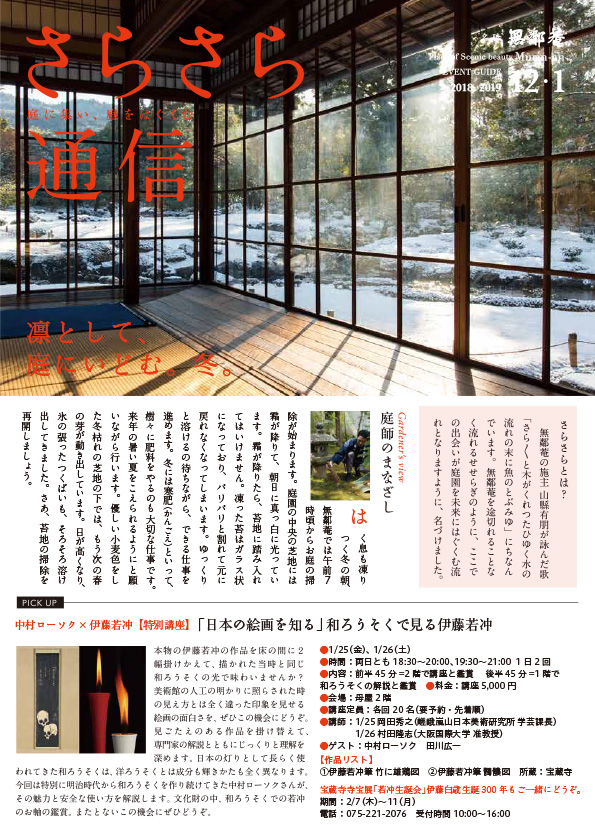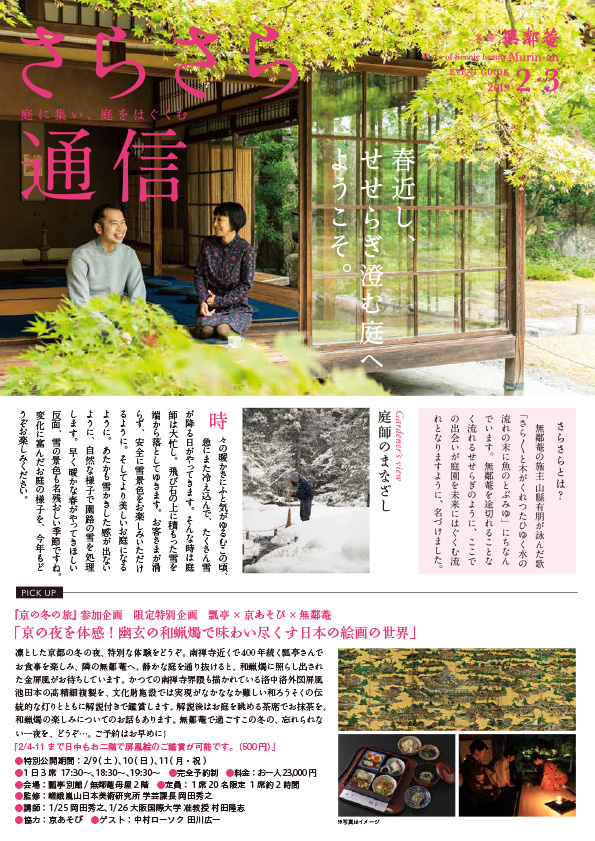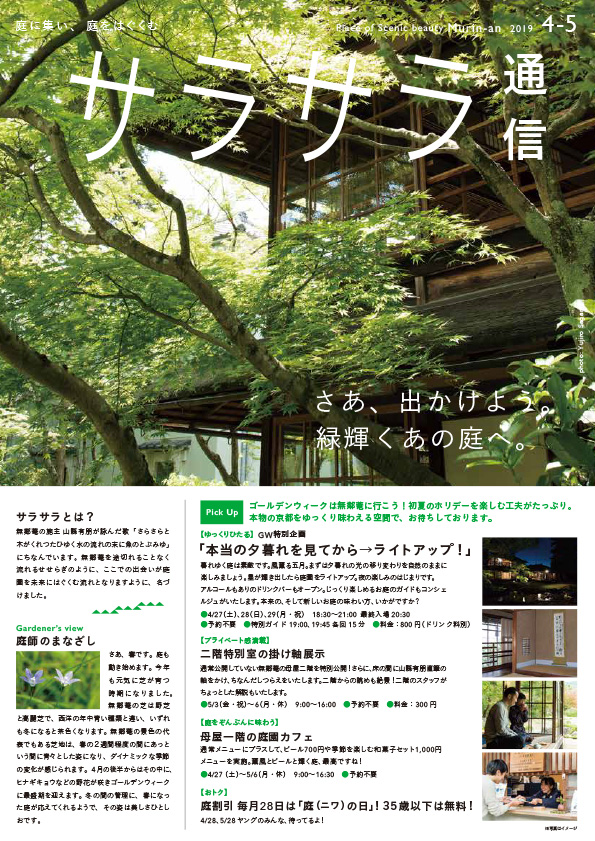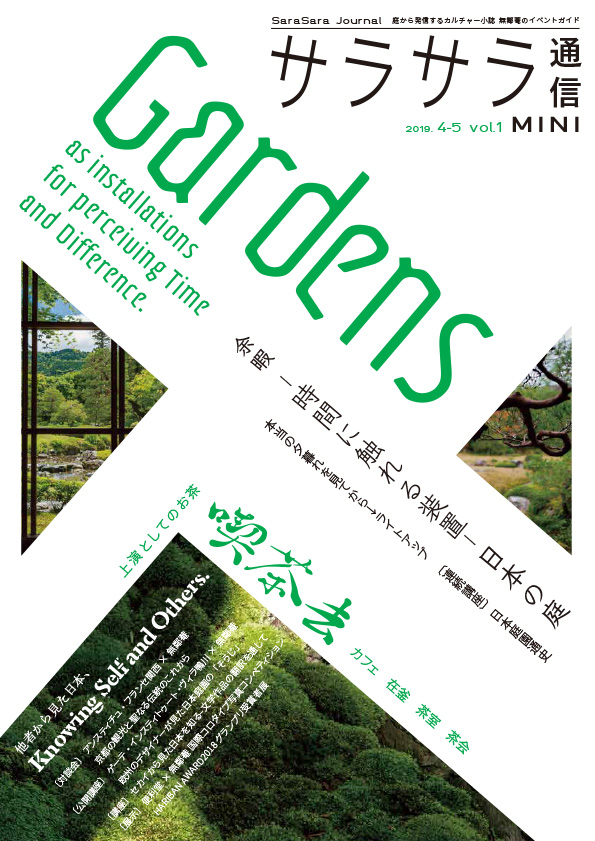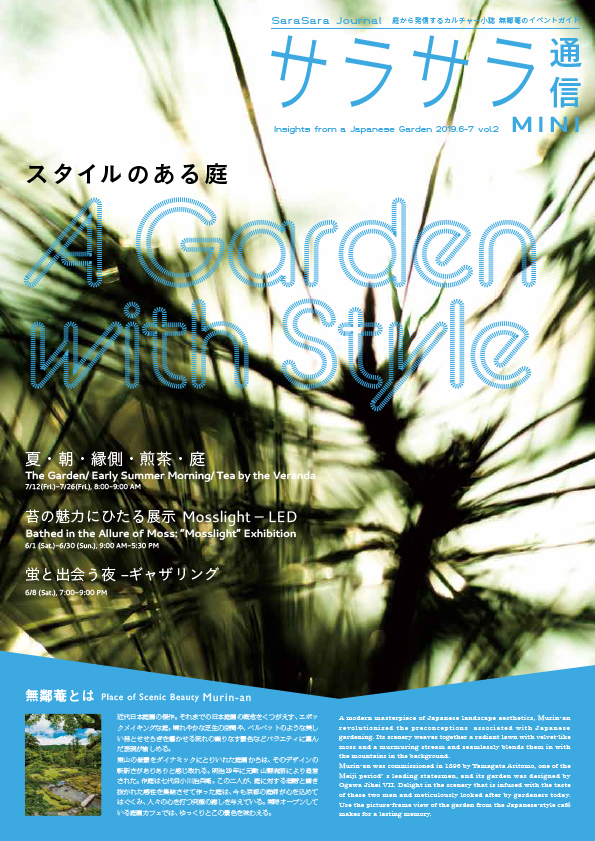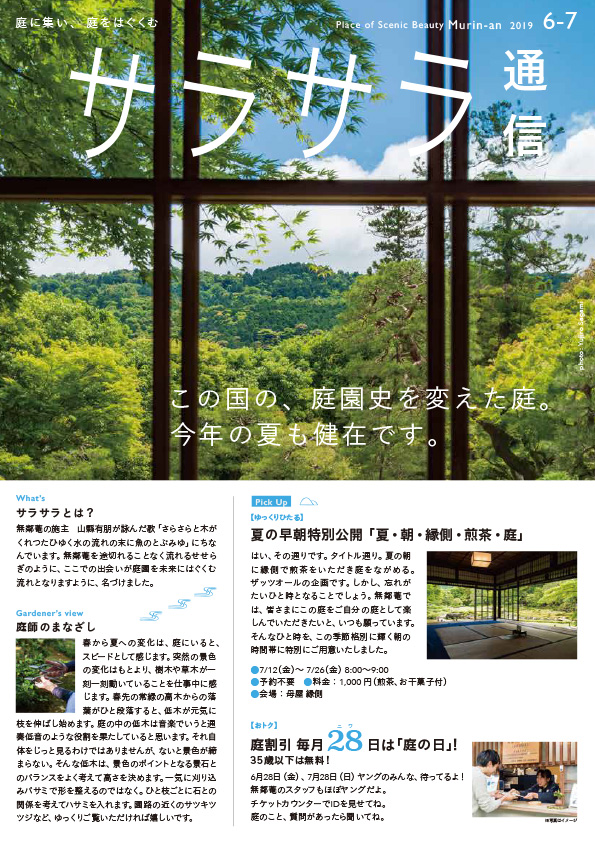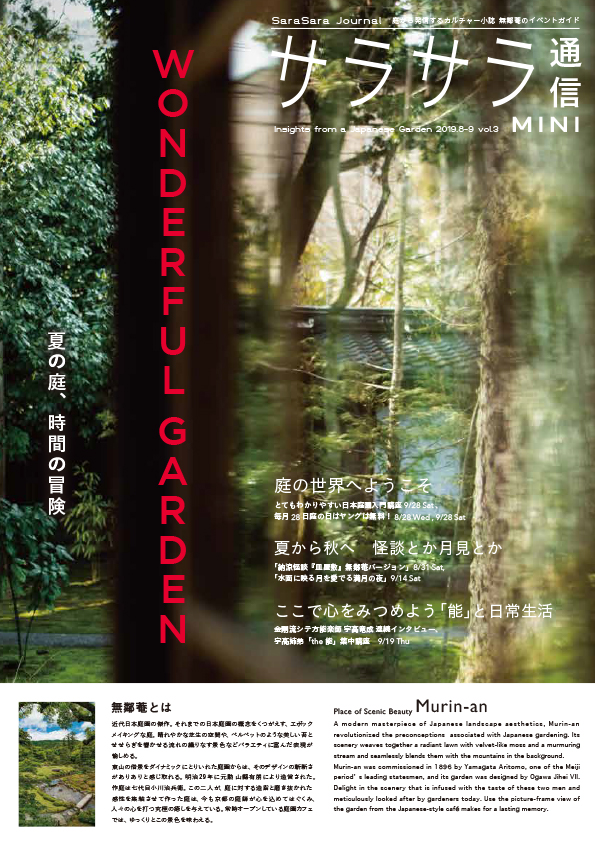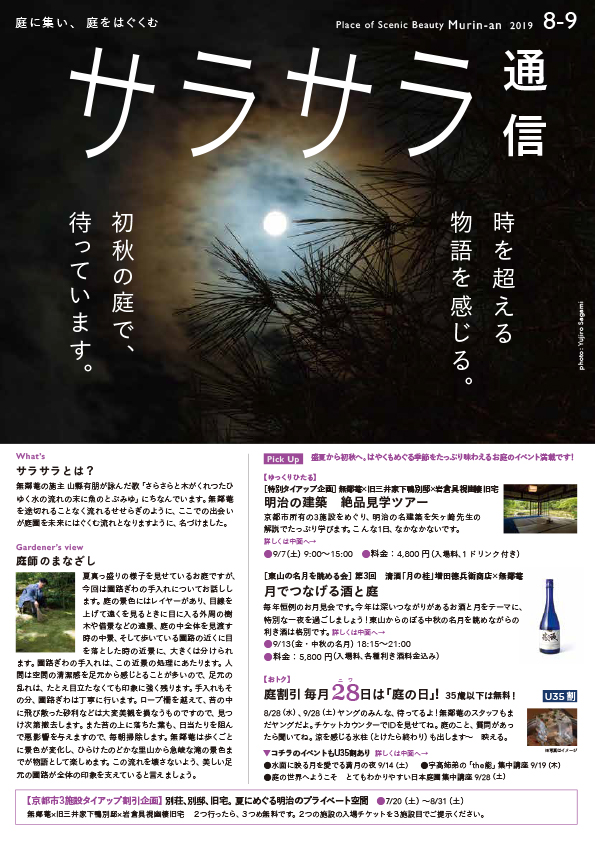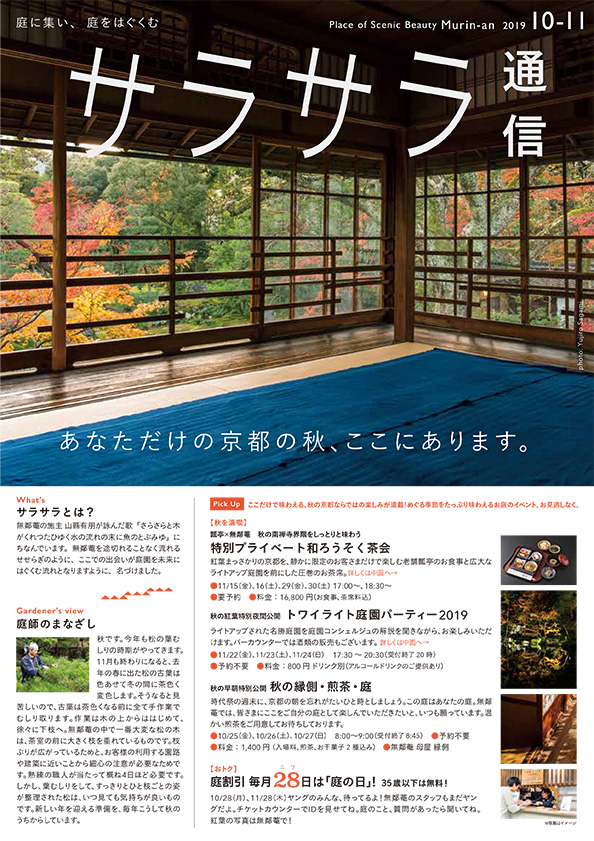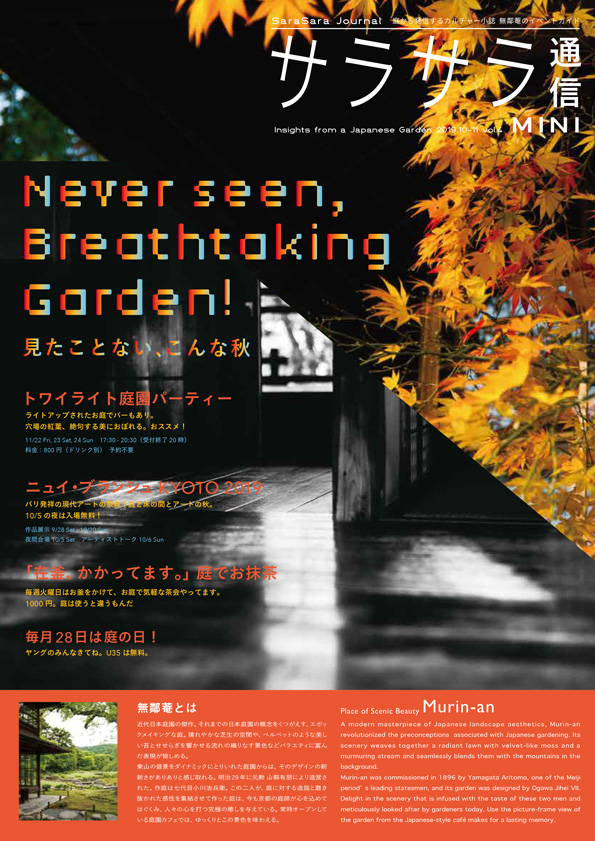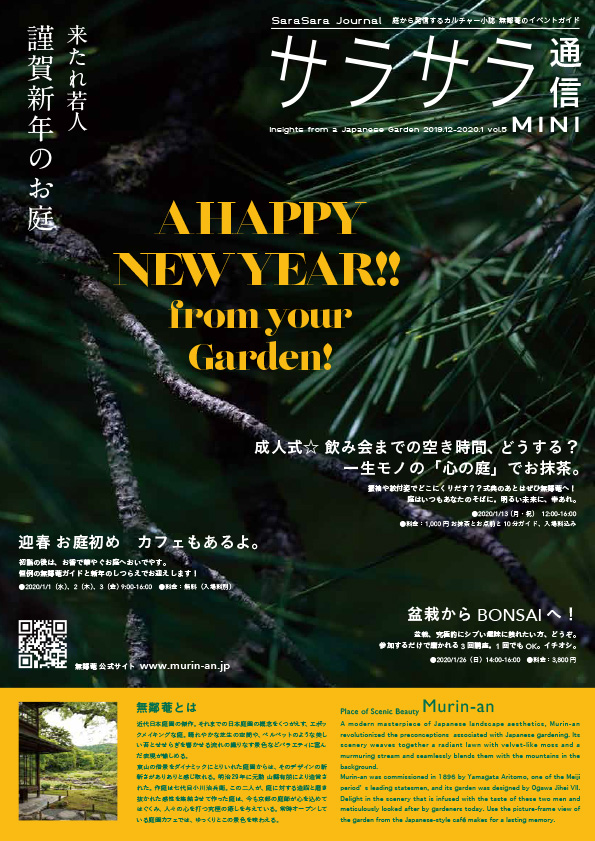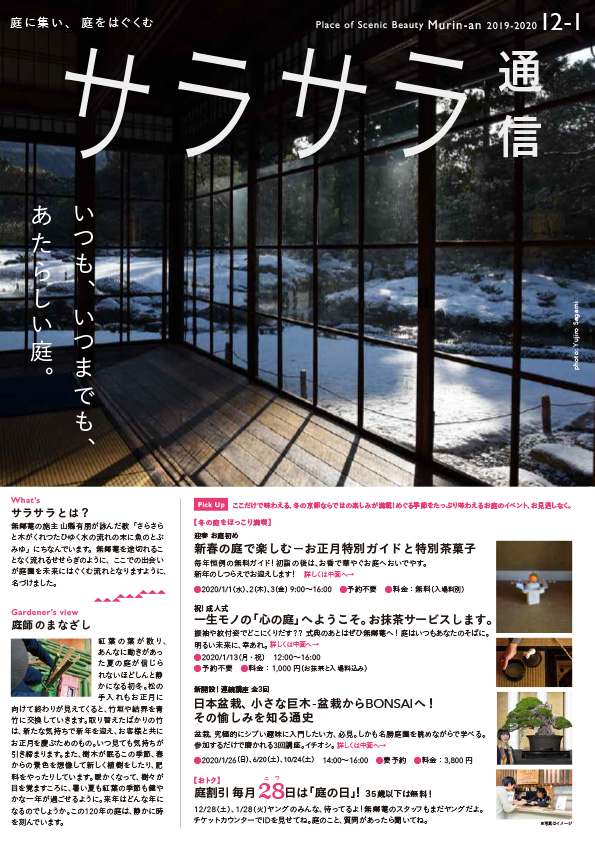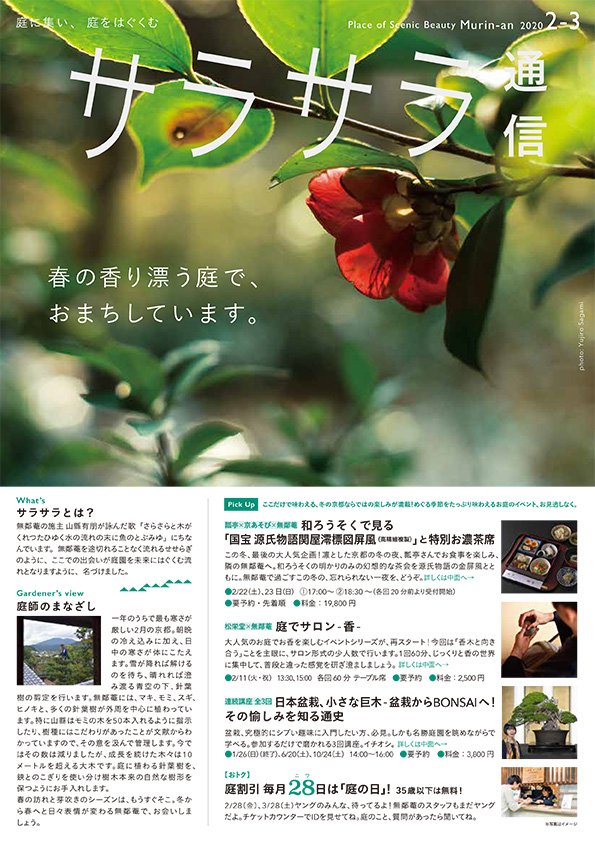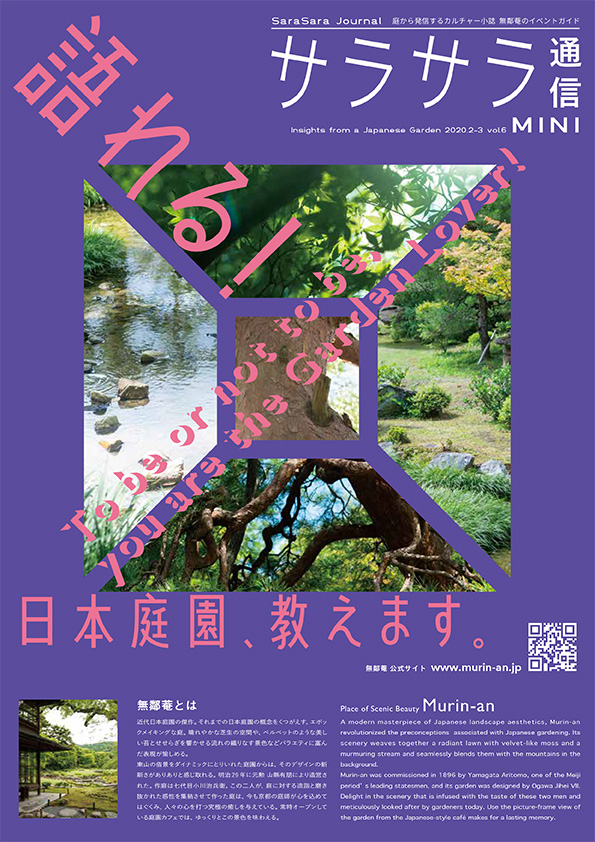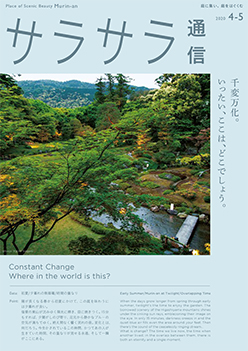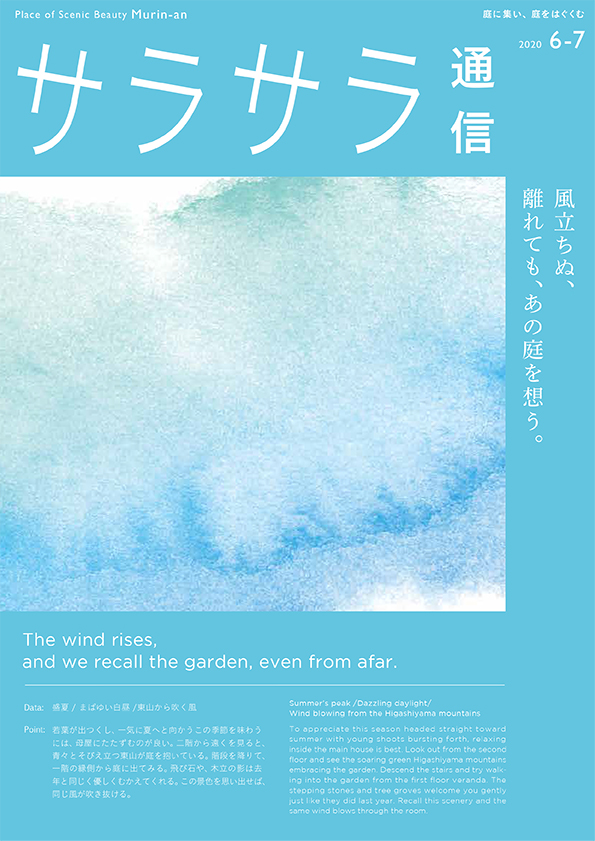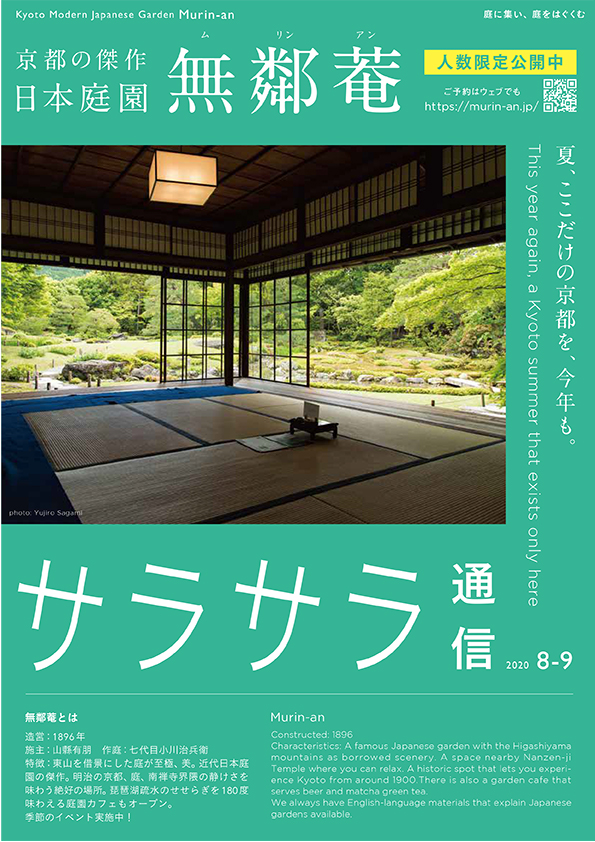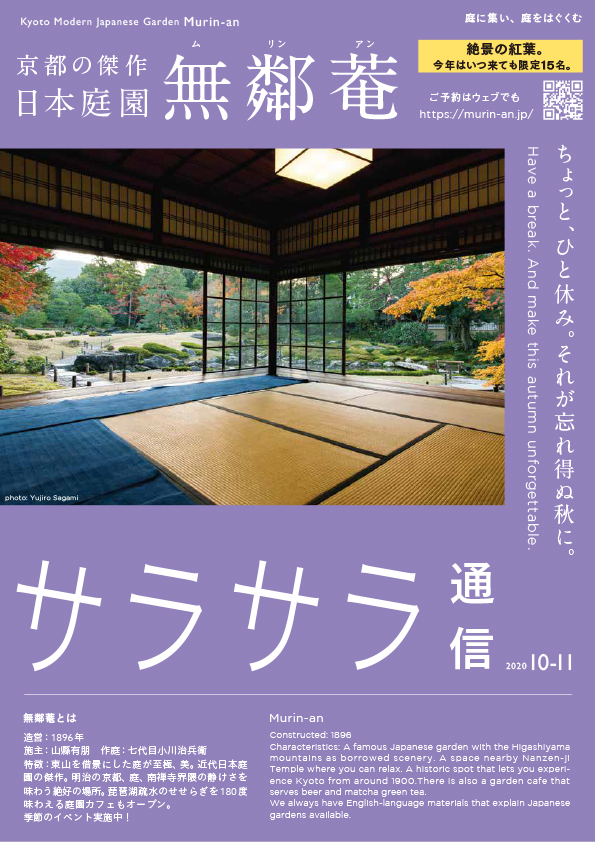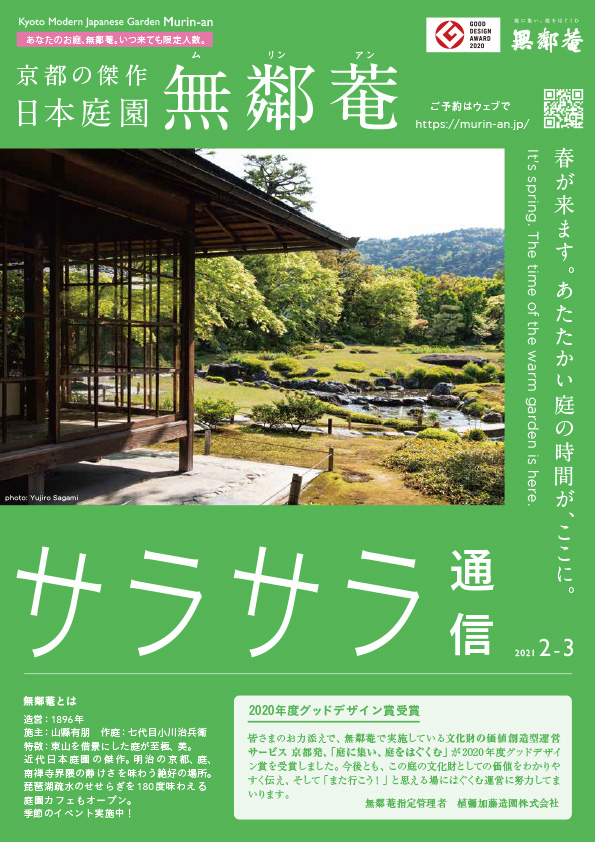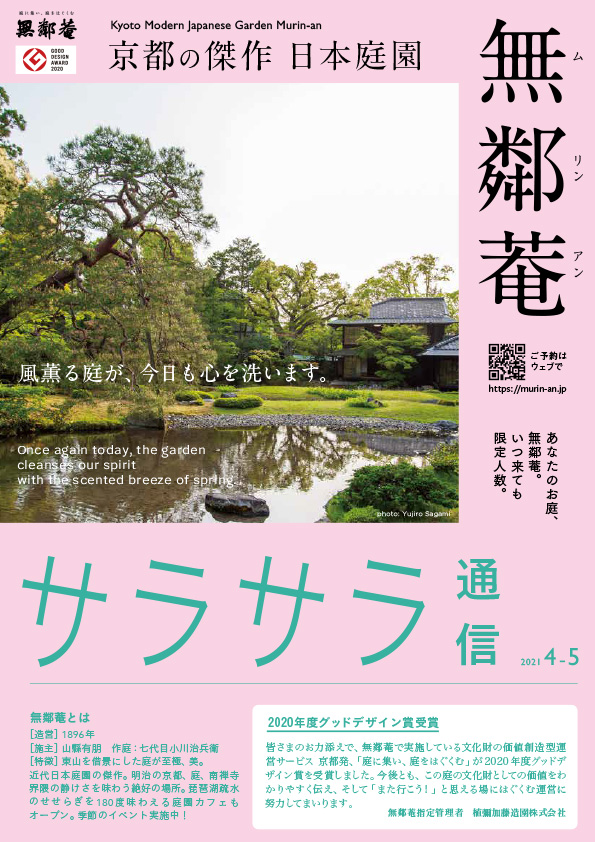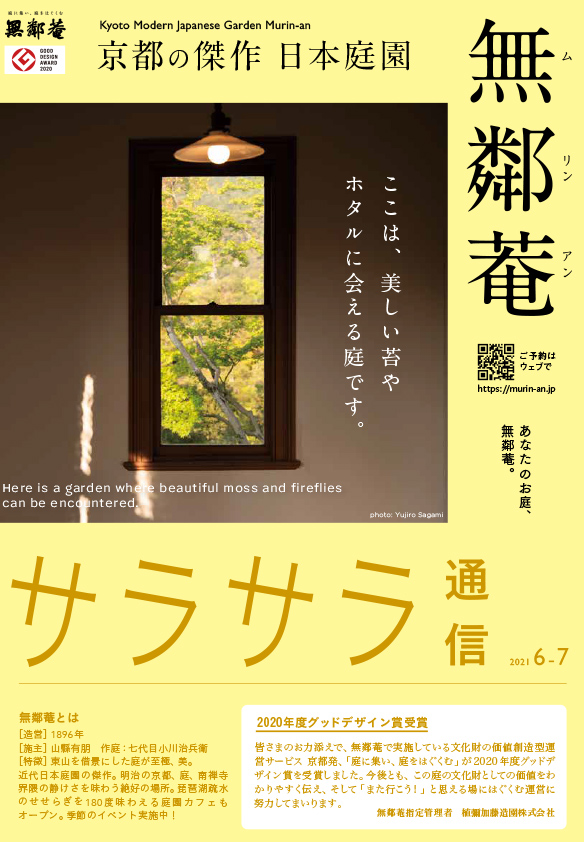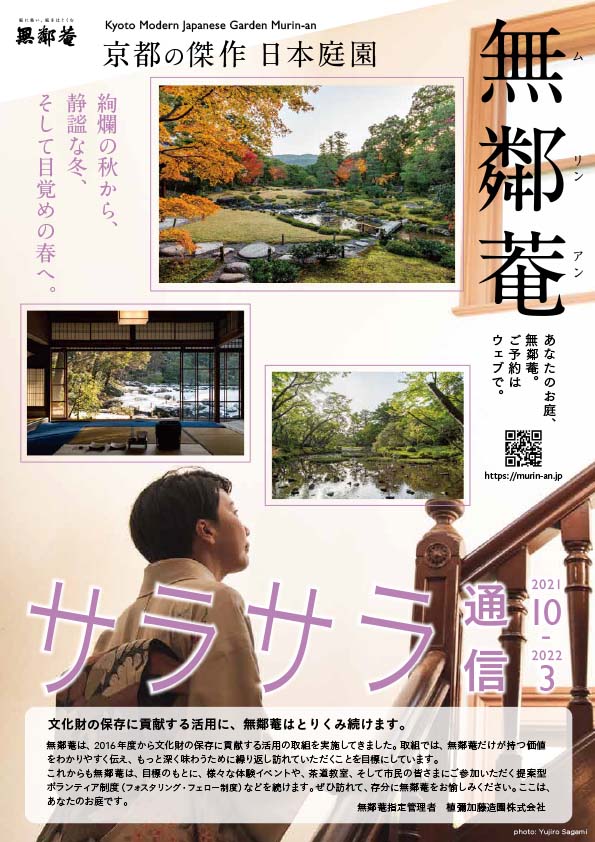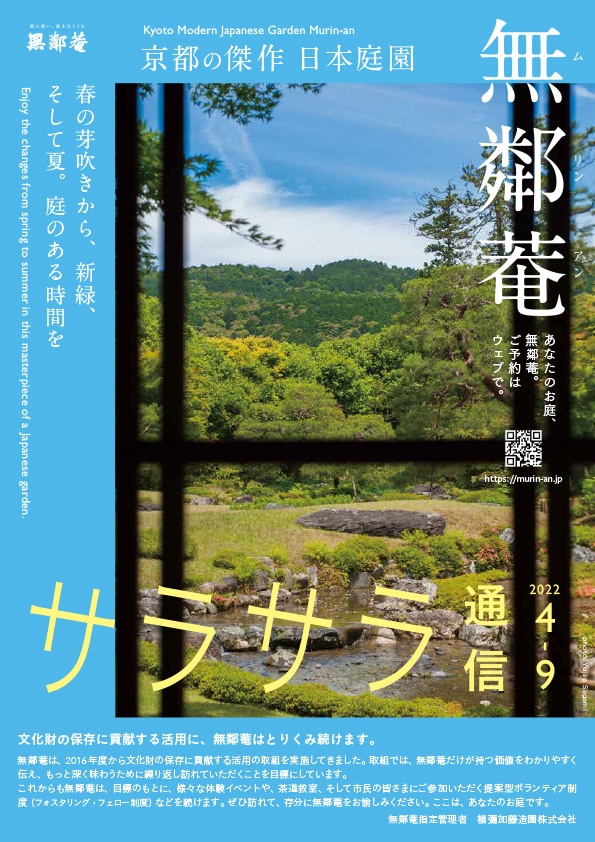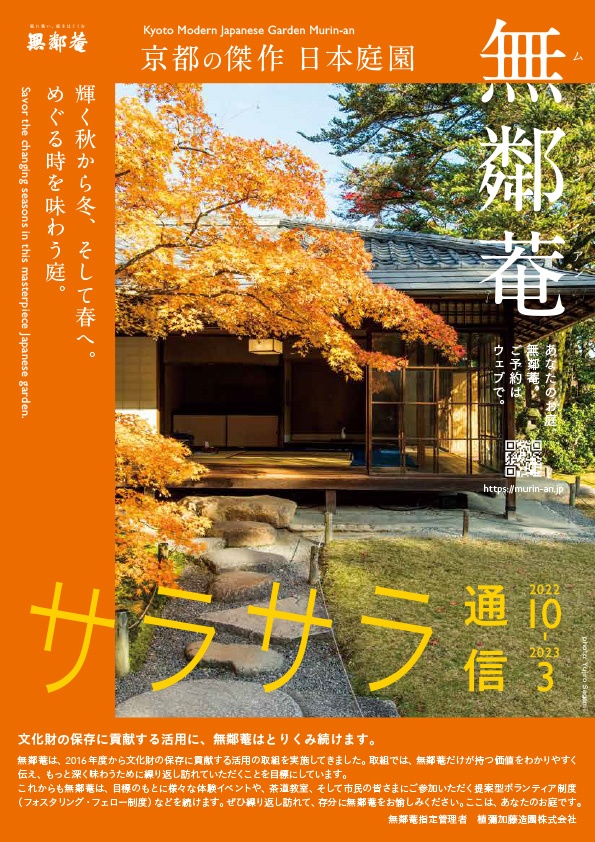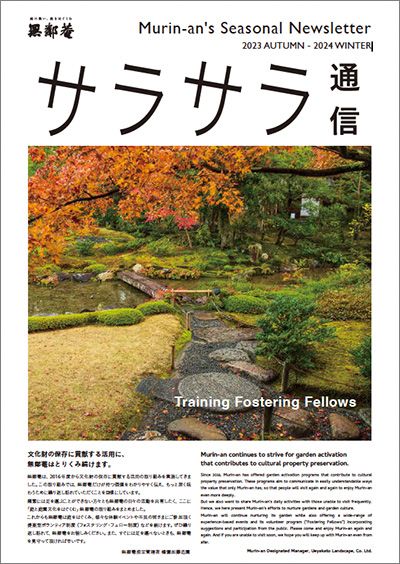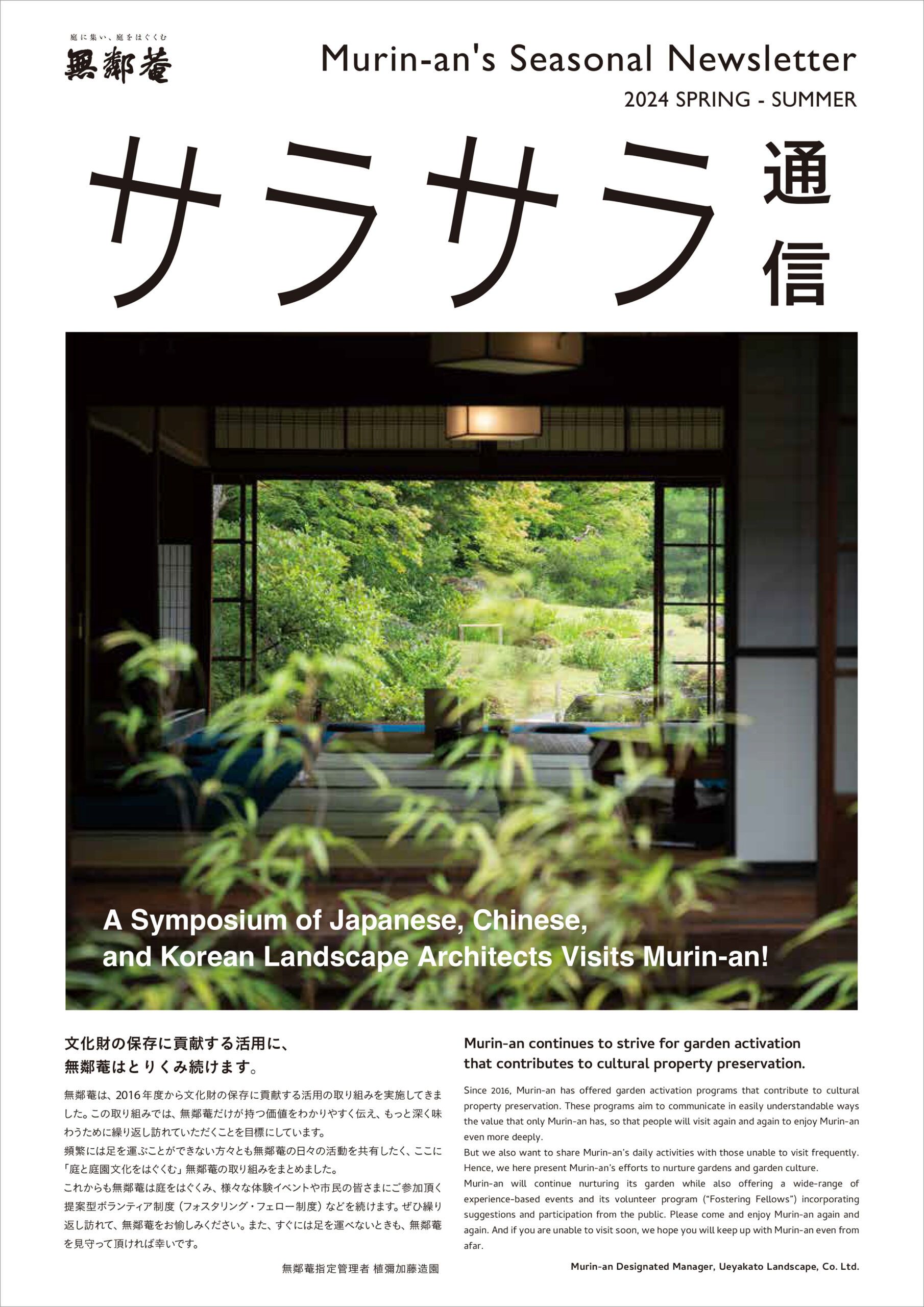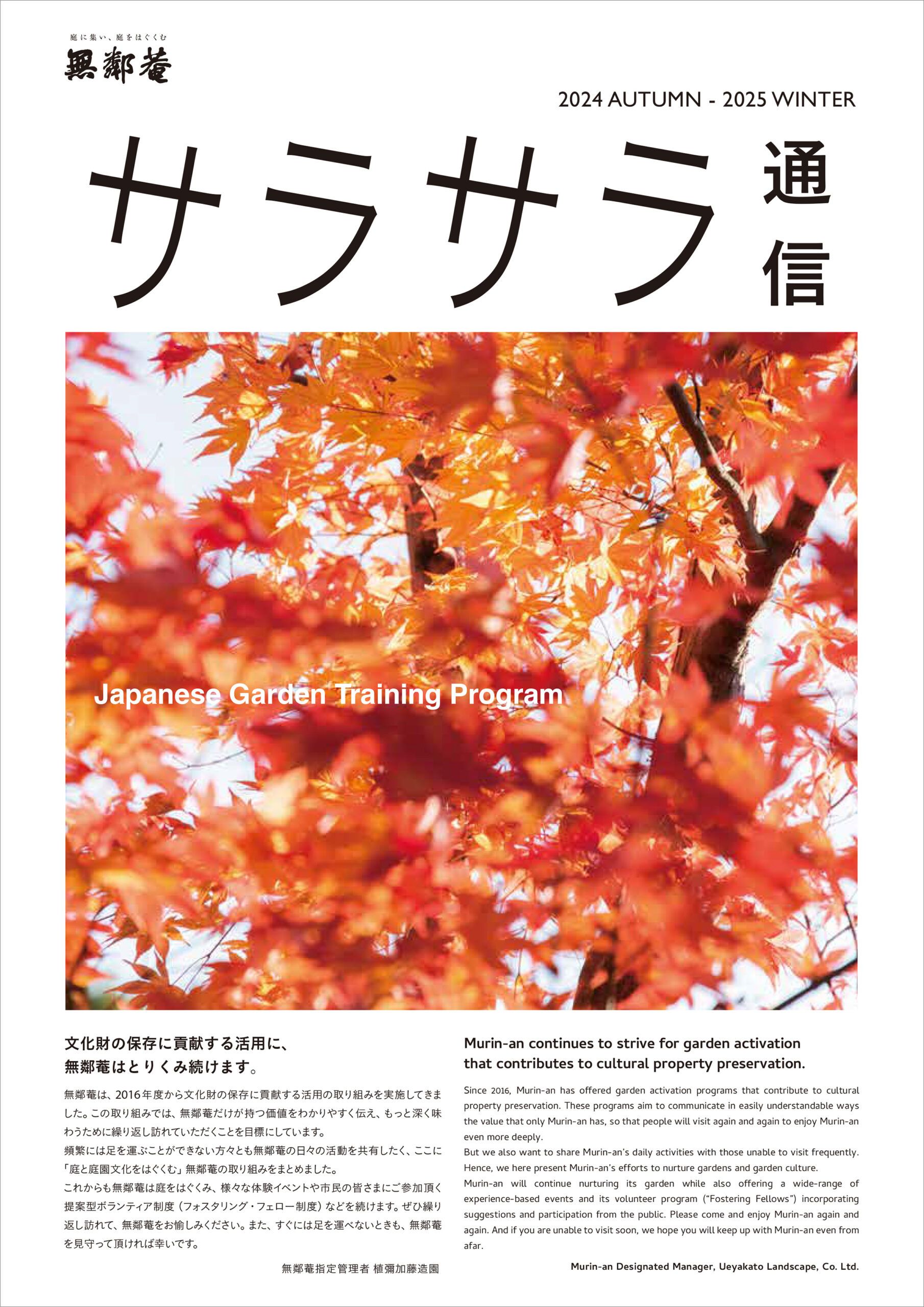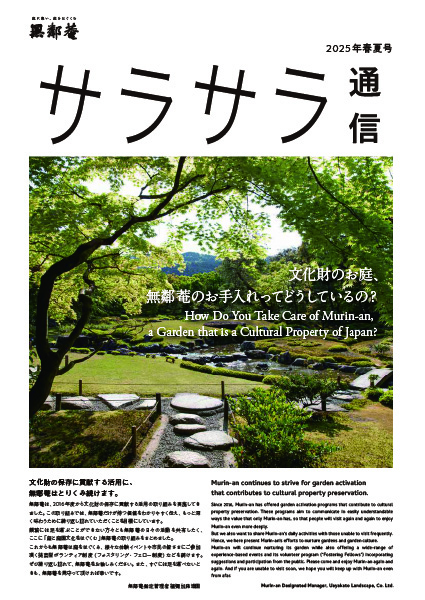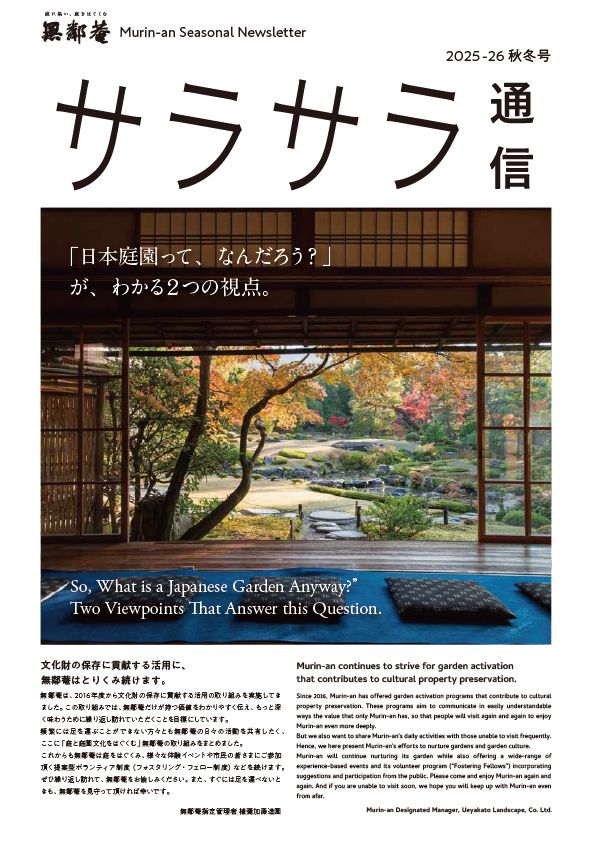Murin-an Periodical
This is the information program of Murin-an Garden.
It provides information on Japanese gardens, invitations to events that help foster the garden and seasonal highlights.
The name of this periodical is Sara-Sara News.
What does “sara-sara” mean? In Japanese, this word is used to evoke a gentle rustle or murmuring sound in nature. We have adopted it from a passage in a poem by Yamagata Aritomo, Murin-an’s original owner. It reads
At the end of a water stream/That murmurs gently as it travels hidden beneath the shade of trees/I see a fish leap
We chose this publication’s title to reflect our hope that, like the ceaseless flow of the murmuring brook flowing around Murin-an, the encounters here will produce a current toward nurturing Japanese gardens for the future.

Gardener’s View
Hello! This is Kenta Deguchi, Murin-an’s head gardener. Here’s a picture of our preparations to light up the garden. Because Murin-an is a nationally designated Place of Scenic Beauty, it wouldn’t be good to dig up the ground and clear trees to put in new lighting. Nevertheless, to respond to the tastes of guests today and convey the value of a Place of Scenic Beauty garden, evening use of the garden is essential. That’s why at Murin-an I always install lights by hand. When the event is over, lights are removed and the garden returns to its original form. The lighting is designed by LEM Space Factory to draw out the unique beauty that only Murin-an has. Come enjoy illumination that is firmly rooted in Murin-an’s value as a Place of Scenic Beauty and a night in a garden woven together by the care its gardeners give it everyday.


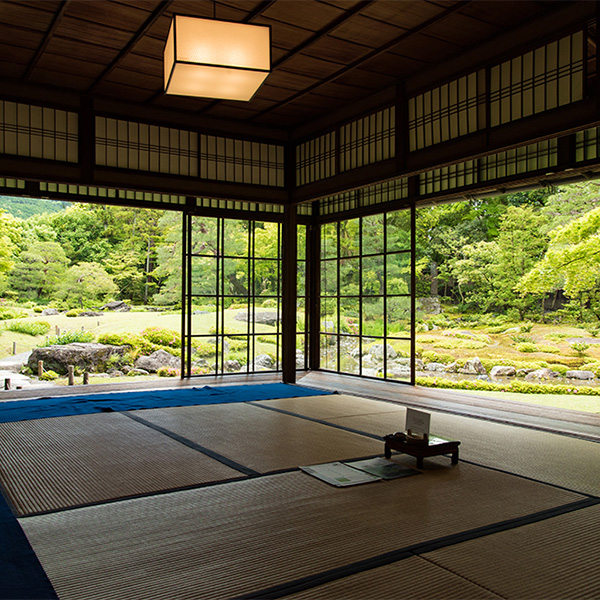 Learn here about Japanese culture and real gardens.
Learn here about Japanese culture and real gardens. “We put a kettle on for zaifu tea” Matcha tea in the garden.
“We put a kettle on for zaifu tea” Matcha tea in the garden.
